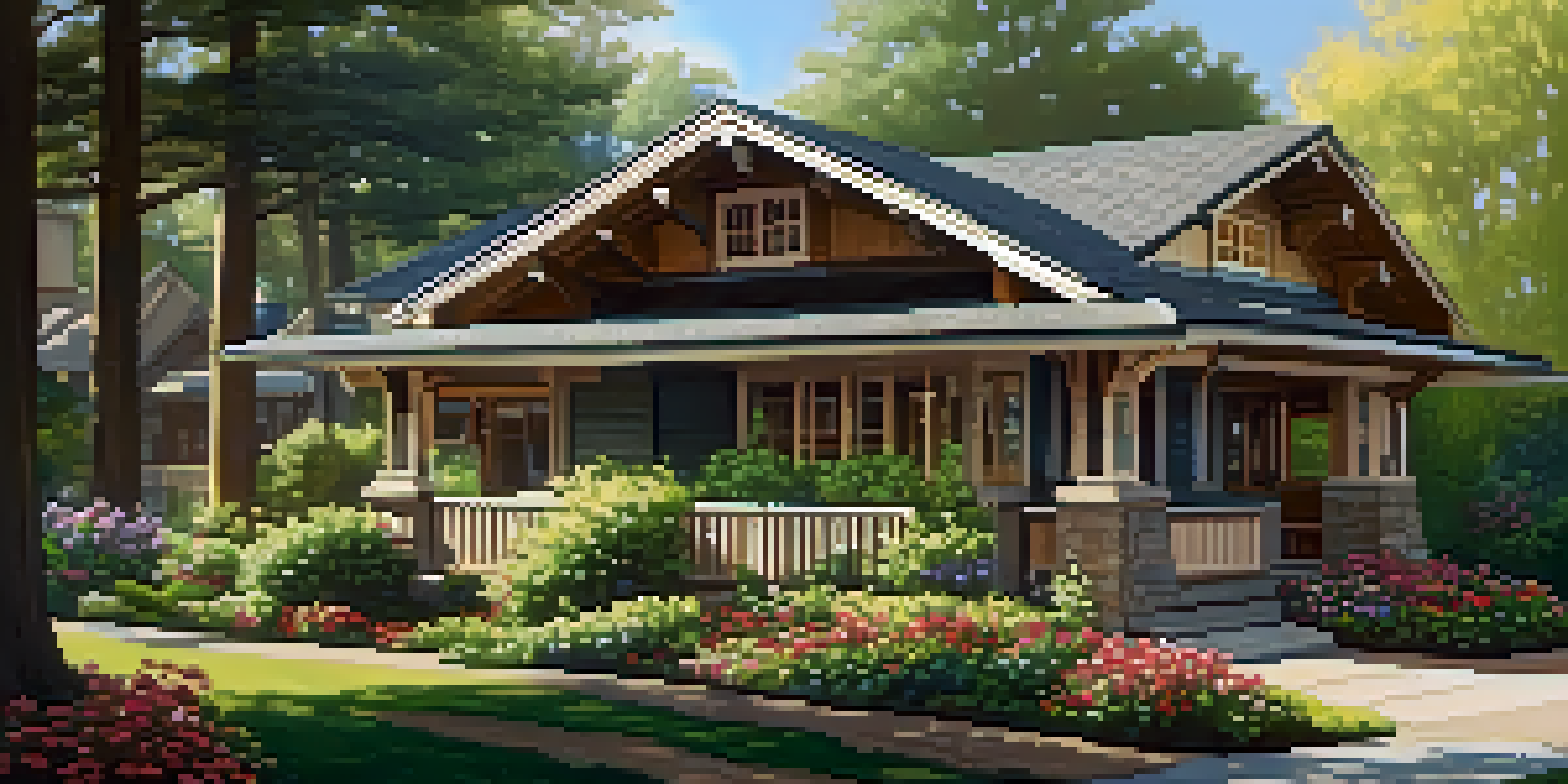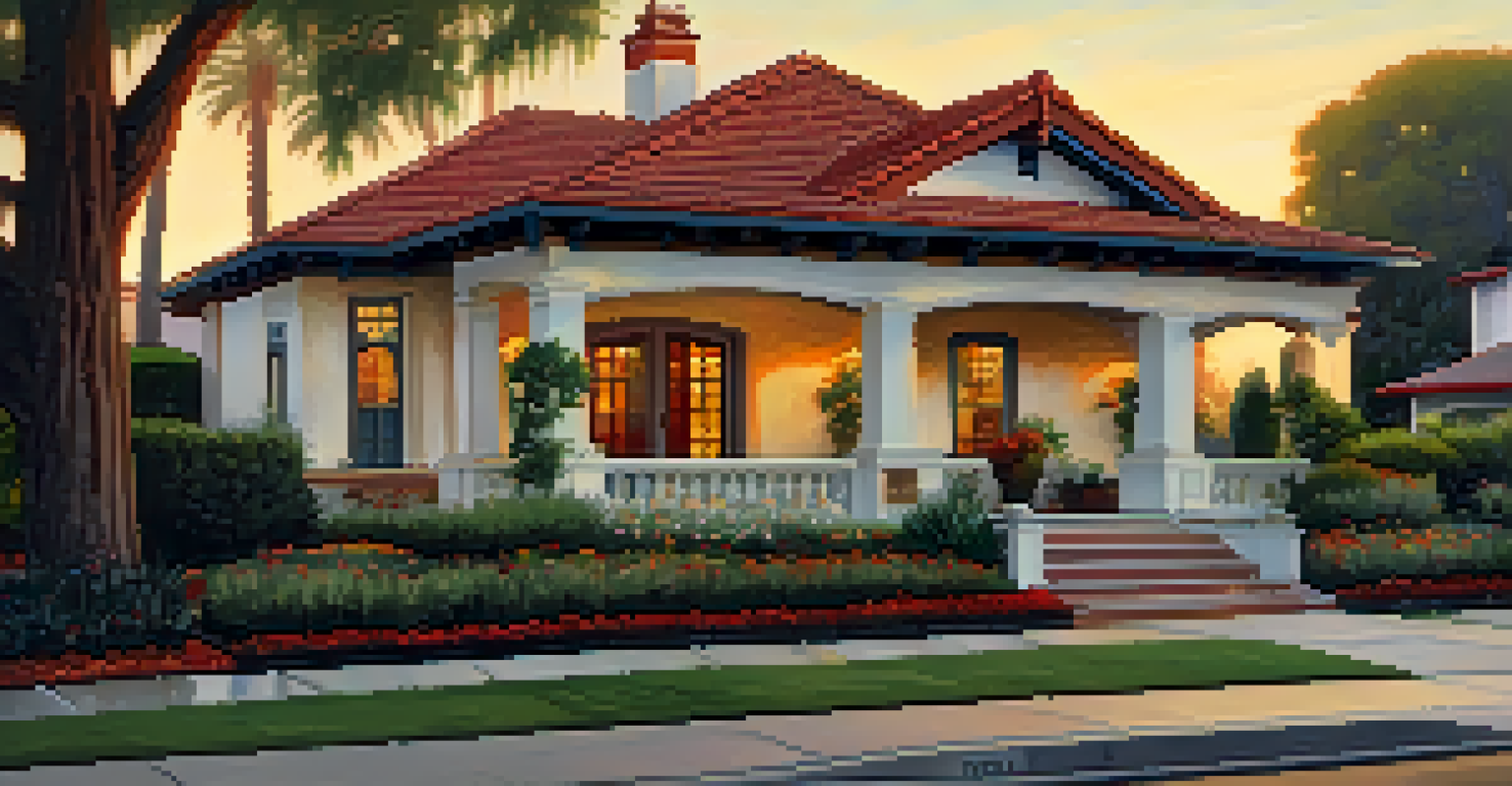Craftsman vs. Spanish Revival: Pasadena's Architectural Duel

Understanding Pasadena's Architectural Heritage
Pasadena, California, is a treasure trove of architectural styles that reflect its rich history. Among these styles, Craftsman and Spanish Revival stand out as two of the most iconic. Each style tells a story about the people and the era that shaped them, showcasing unique characteristics and cultural influences.
Architecture is the thoughtful making of space.
The Craftsman style, rooted in the Arts and Crafts movement, emphasizes handcrafted details and natural materials. In contrast, the Spanish Revival style draws inspiration from the colonial architecture of Spain, bringing a touch of Mediterranean flair. Together, they create a fascinating mosaic of design that speaks to Pasadena's diverse heritage.
As we delve deeper into these two styles, we can appreciate how they not only define the city’s landscape but also reflect broader trends in American architecture during the early 20th century.
Key Features of the Craftsman Style
Craftsman architecture boasts a distinctive charm characterized by low-pitched roofs, overhanging eaves, and exposed rafters. These homes often feature extensive use of wood, with built-in furniture and handcrafted details that showcase the artistry of the builders. The emphasis on horizontal lines creates a sense of harmony with the surrounding landscape, inviting nature into the home.

One popular example of Craftsman design is the iconic bungalow, which became synonymous with this architectural movement. Bungalows typically include wide porches, large windows, and open floor plans that promote a sense of community and comfort. This style resonates with many homeowners who value craftsmanship and simplicity in their living spaces.
Pasadena's Architectural Diversity
Pasadena showcases a rich blend of architectural styles, particularly Craftsman and Spanish Revival, reflecting its diverse cultural heritage.
The Craftsman aesthetic not only reflects a desire for a connection to nature but also embodies the principles of sustainability and functionality. As we explore this style, it's easy to see why it remains a beloved choice for many homeowners today.
Distinctive Elements of Spanish Revival Architecture
Spanish Revival architecture is easily recognizable by its stucco exteriors, red-tiled roofs, and intricate wrought-iron details. Inspired by the Spanish colonial period, this style often incorporates arches, decorative tiles, and colorful accents that evoke a sense of warmth and charm. The use of courtyards and gardens further enhances the inviting atmosphere of these homes.
The best way to predict the future is to create it.
One of the most enchanting aspects of Spanish Revival homes is their ability to blend indoor and outdoor living. Many homes feature large windows and doors that open up to lush gardens, creating a seamless transition between the two. This connection to nature captures the essence of Southern California’s lifestyle, where outdoor enjoyment is a daily affair.
As we appreciate the beauty of Spanish Revival architecture, it becomes clear that this style represents not just a visual aesthetic but also a way of living that celebrates community, relaxation, and the joys of nature.
Cultural Influences Shaping These Styles
The Craftsman and Spanish Revival styles emerged during a time of cultural transformation in America. The early 1900s saw a shift towards valuing craftsmanship and authenticity, which fueled the popularity of the Arts and Crafts movement. This movement was a response to industrialization and mass production, advocating for a return to handcrafted artistry.
In contrast, the Spanish Revival style was heavily influenced by California's history and its colonial past. As the state experienced a population boom, architects sought to celebrate the region's heritage through design, drawing inspiration from the Spanish missions and adobe structures. This blend of cultures resulted in a unique architectural identity that remains relevant today.
Impact of Landscape on Design
The local landscape significantly influences architectural styles in Pasadena, promoting designs that harmonize with nature and enhance outdoor living.
Both styles reflect the diverse influences that have shaped Pasadena over the years, showcasing how architecture can serve as a mirror to society's evolving values and tastes.
The Role of Landscape in Architectural Design
In Pasadena, the surrounding landscape plays a crucial role in shaping architectural design. The Craftsman style, with its emphasis on harmony with nature, often incorporates local materials and colors that blend seamlessly into the environment. This thoughtful integration creates homes that feel like a natural extension of the landscape.
On the other hand, Spanish Revival architecture embraces the sun-drenched California climate with open courtyards and lush gardens. The use of vibrant tiles and earthy tones reflects the colors of the region, enhancing the overall aesthetic appeal. These homes often invite residents to enjoy the outdoors, fostering a lifestyle that celebrates the beauty of nature.
Ultimately, both styles are a testament to how architecture can enhance the living experience by creating spaces that are not only visually appealing but also deeply connected to their surroundings.
Preservation Efforts and Challenges
As Pasadena continues to grow and evolve, preserving its architectural heritage becomes increasingly important. Many residents and organizations are dedicated to maintaining the integrity of Craftsman and Spanish Revival homes, recognizing their historical and cultural significance. These efforts often involve restoration projects, educational campaigns, and community initiatives aimed at raising awareness.
However, challenges abound in the preservation journey. Urban development pressures, changing lifestyles, and the cost of restoration can threaten these architectural gems. Balancing modern needs with the desire to retain historical integrity requires thoughtful planning and community involvement.
Preservation of Architectural Heritage
Efforts to preserve Pasadena's architectural heritage are crucial as urban development poses challenges to maintaining its historical integrity.
By fostering a sense of appreciation for these architectural styles, Pasadena can ensure that future generations continue to enjoy and learn from the rich history embedded in its buildings.
The Future of Pasadena's Architectural Landscape
As we look to the future, Pasadena's architectural landscape will continue to evolve while honoring its past. New designs may draw inspiration from both Craftsman and Spanish Revival styles, creating a fusion that respects historical elements while incorporating modern functionality. This blending of styles could lead to innovative solutions that meet the needs of contemporary living.
Moreover, ongoing community engagement will play a vital role in shaping this future. By involving residents in discussions about development and preservation, Pasadena can create a collaborative approach that respects its historical roots while accommodating growth. This dialogue ensures that the voices of those who cherish the city's architectural heritage are heard.

Ultimately, the future of Pasadena's architecture lies in a harmonious balance between honoring the past and embracing the possibilities of the present and future.